ISSUES & REALITIES
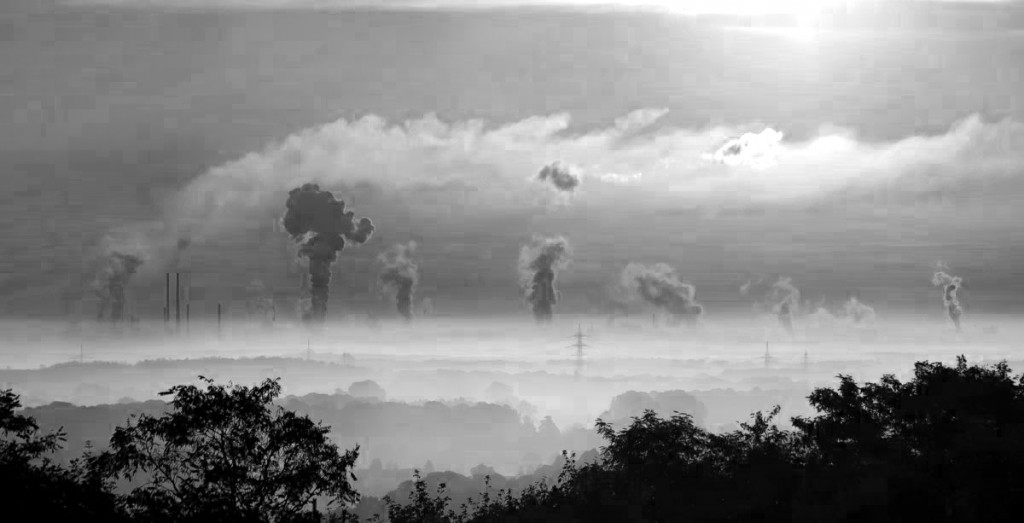
Barcelona, even though being one of the biggest tourism capitals in Europe, has been battling with environmental problems for some time. The biggest issue that it’s facing right now is urban pollution.
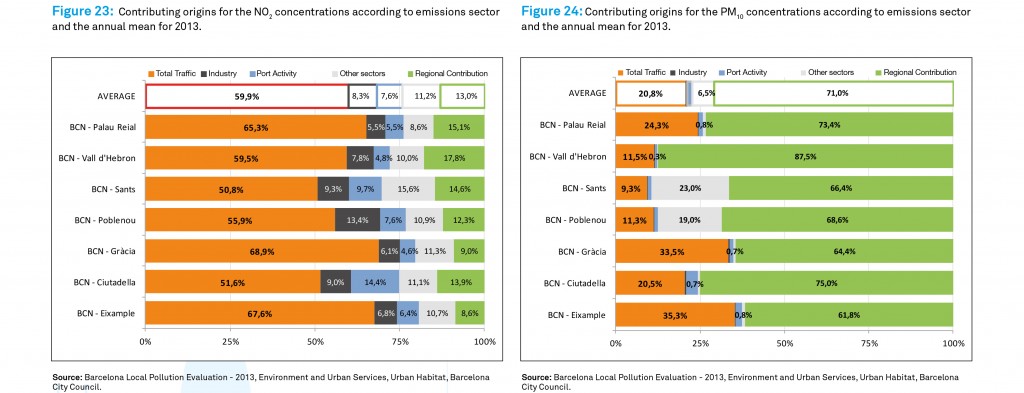
The Environmental Ministry report released last year, states Barcelona as one the worst offenders exceeding government guidelines for limits on air pollution. The biggest contribution to these alarming figures is the massive increase in carbon footprint caused by road transport, especially personal vehicles. This is despite a high awareness of the damage cars cause the environment as well as the higher costs of using a household vehicle compared to public transport costs. Other major sources include gas fired heating systems, illegal burning of fossil fuels and industrial materials, domestic practices. These are not only affecting human health but also negatively impacting the ecosystem and its various metabolic cycles.
ABOUT THE STUDIO
Our introductory studio focuses on these issues of climatic change and global warming with a bottom-up approach, in an attempt to create spatial devices that change how citizens understand and react to these issues at individual levels – trying to re-mediate the crisis where it started. Currently faced with this issue of excessive pollution, the city has come up with a new mobility plan based around the idea of Superillas (superblocks) with the aim to repurpose streets into “citizen spaces” for culture, leisure and the community. The studio, therefore, worked on one of these Superillas in the Poblenou district to work closely with the idea of giving the streets back to its citizens.
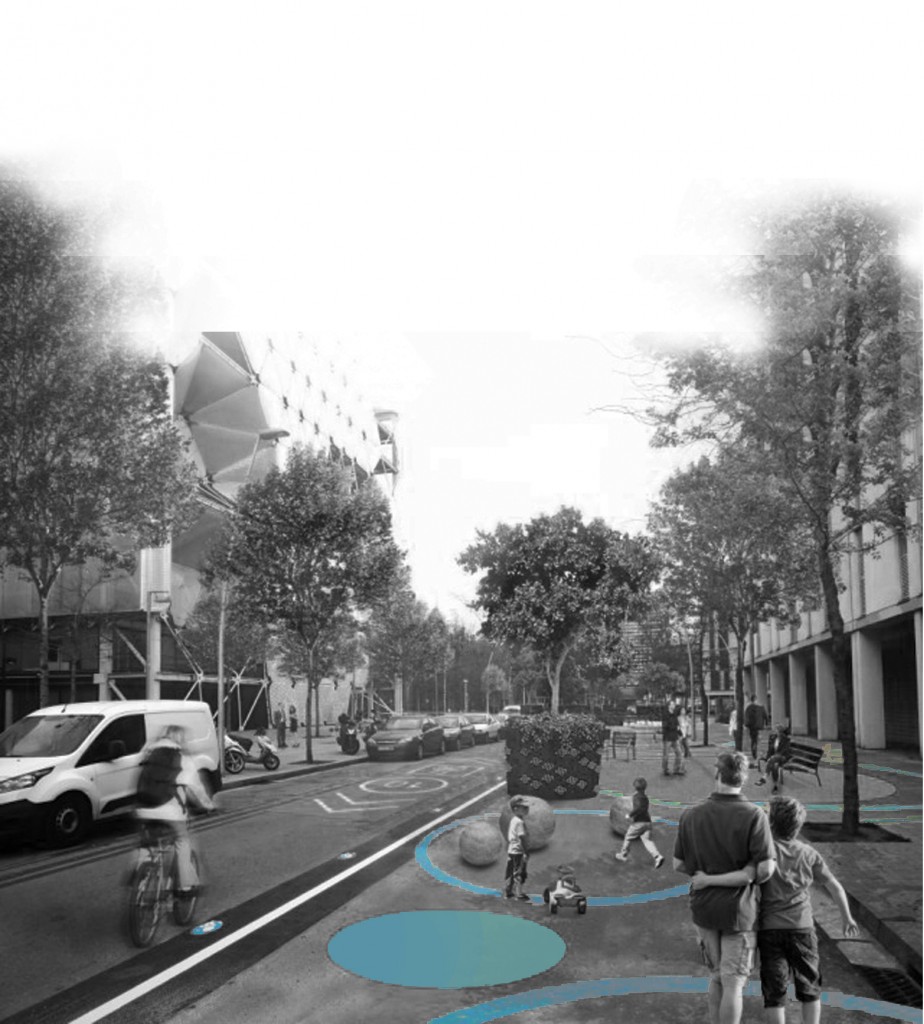
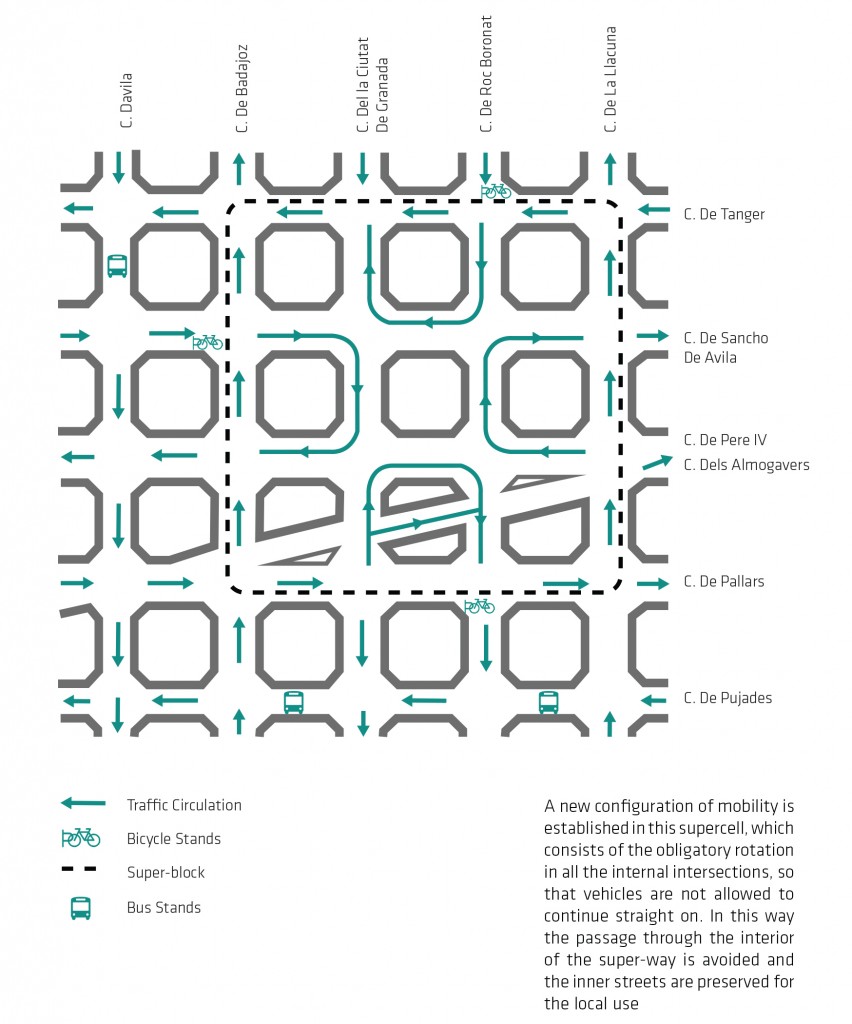
ABOUT THE PROJECT
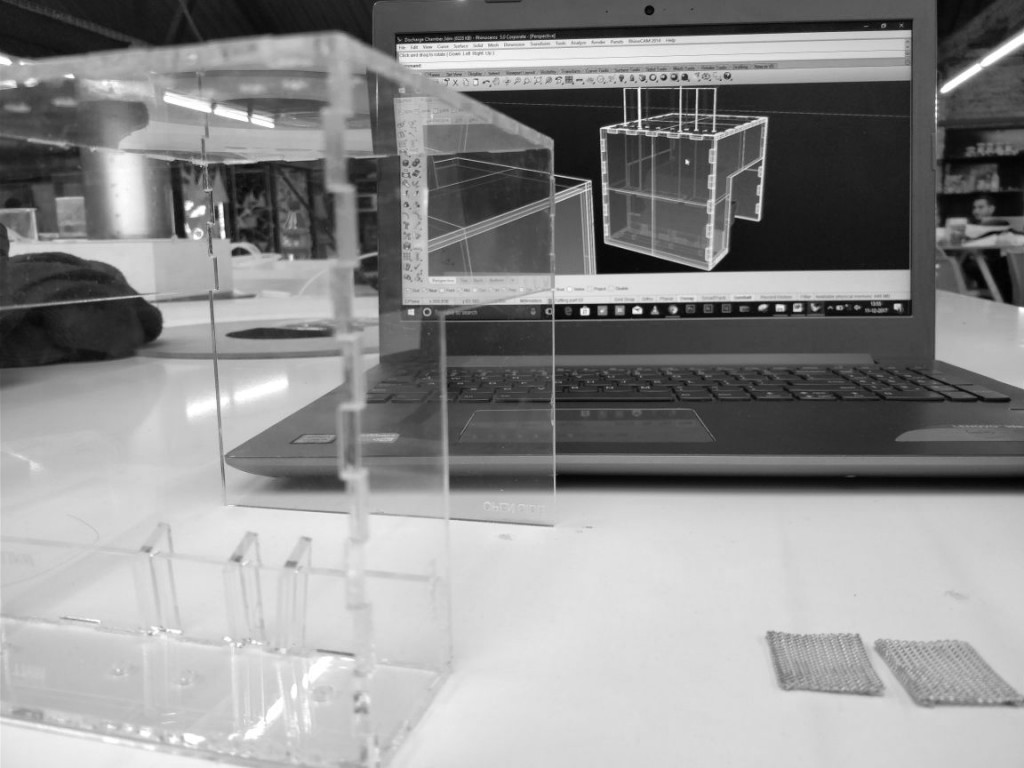
De-pollute is an urban spatial device designed to tackle the issues of climatic change and global warming by absorbing the pollution contents from the atmosphere. The project not only aims to generate a scalable device but also an interactive public module in Superilla, Poblenou-creating a micro-climate for social gatherings. Instead of hiding the absorbed pollution contents, the idea here is to exhibit it and use it as a design strategy to create awareness about the issue.
The project envisions, creating a futuristic urban ecology which is an extension of one’s residence – where green is not an anecdote and where the neighborhood’s history and local life have a presence.
RESEARCH AND PROTOTYPE DEVELOPMENT
The project went through 4 stages of design and prototype development before reaching the final vision. Each stage involved rigorous research, tests, and findings.
STAGE 01
Agents: Wind, pollution
Vision: Canopy module that captures the agents
Prototype Components: Linear electromagnetic accelerator, fabric with support frame
Technique: Conversion of these agents into usable form of energy
Technology: Electromagnetic acceleration and entropy harvesting.
Aim: Use the captured energy to light street lamps and feed into charging stations.
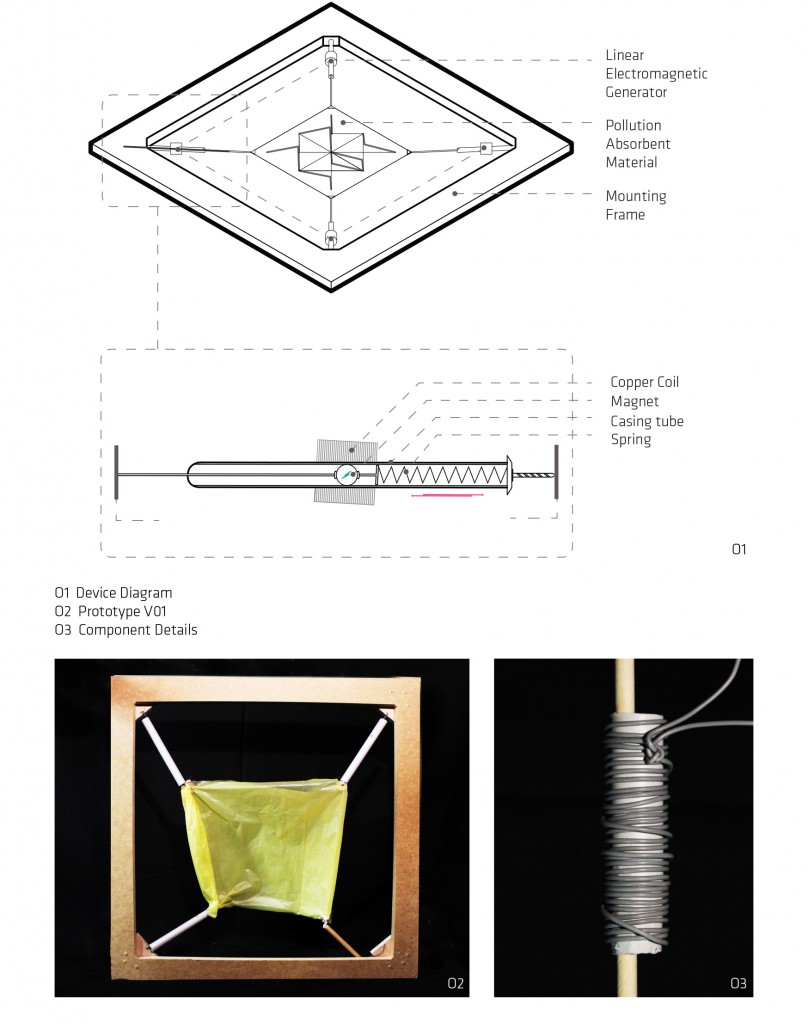
In the 1st stage of prototype development, we proposed a module with a vision of creating an articulated canopy at various cross-sections of the street. These modules functioned as dual devices capturing wind and pollution contents at the site. Two basic principles were used to develop this prototype. The first one involved using the favorable wind flow at the site to create vibrations in the device that would trigger a linear electromagnetic accelerator to produce energy. The second one uses an absorption material in the device to capture pollution particles and convert it into usable energy using entropy harvesting system. The energy produced from both the sources would then be used to light the street lamps and fed into charging stations.
Findings: The energy production by these techniques isn’t viable since the output is too less to be put to domestic use. Therefore, an alternate technique or approach needs to be employed.
STAGE 02
Agents: Wind, pollution, traffic (public & vehicular), rain, plants
Vision: Canopy module that captures the agents
Prototype Components: Copper weaved fabric, 9V battery, dust particles
Technique: Conversion of wind flow and traffic vibrations to energy that can charge the device with an electrostatic field.
Technology: Electromagnetic acceleration and electrostatic attraction
Aim: Attract pollutant particles and re-direct it into the soil as nutrients
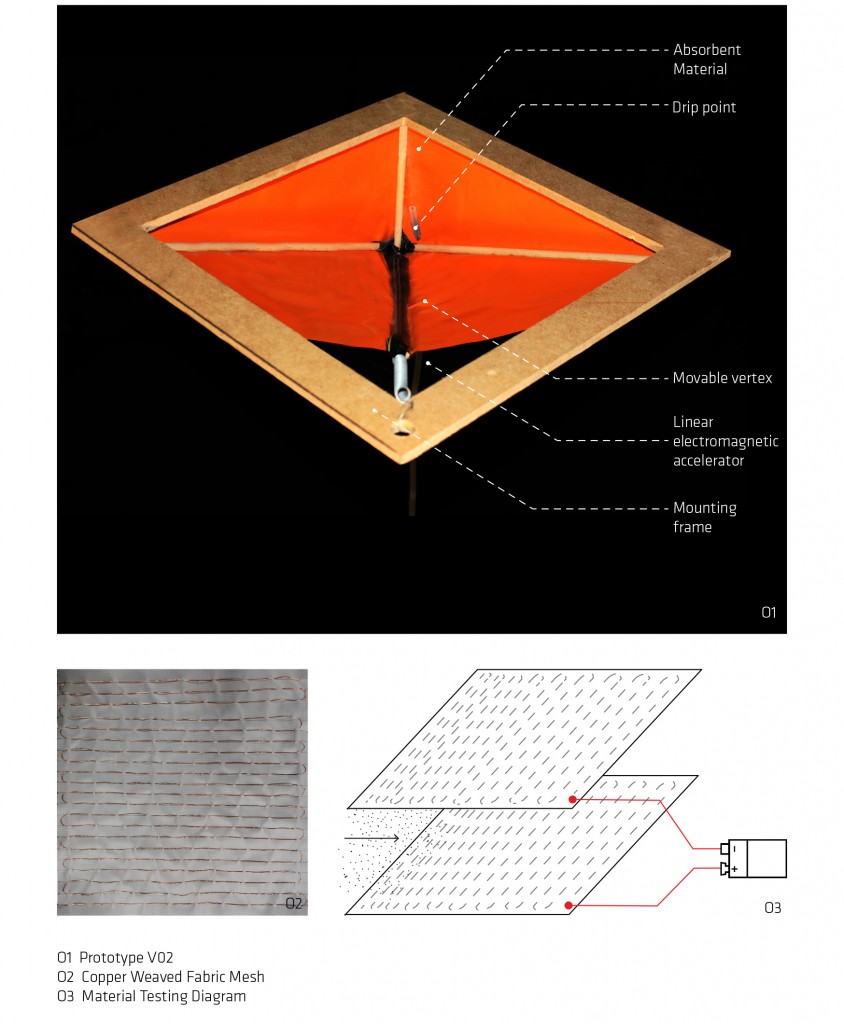
Since the experiments in the first stage showed that the energy output is too less for the domestic use, we instead proposed to redirect this energy to the device. The energy could be fed into a fabric mesh to create an electrostatic field that would attract pollutant particles. We also introduced rain and plants in addition to our existing agents in the metabolic cycle to complete the loop. The approach was that the attracted particles after reaching a certain absorption capacity of the device would be washed down by the rain and channeled to the soil to serve as nutrients to the plants. Therefore, the 2nd stage focused on exploring the static and attraction properties of the charged fabric weaved with copper wire. Initially, a single layer of charged fabric mesh was used to test this; however, no positive results were received. Then another layer of fabric mesh was placed parallel to the first one. This time one of the meshes was connected to a positive source and the other to a negative source. An electrostatic field was generated between these two plates which were then tested with various dust particles for attraction. Meanwhile, various components for the accelerator were customized and fabricated for the device.
Findings: The attraction properties of the fabric mesh under electrostatic charge was very weak when tested. This was either because of the properties of the material itself or the lack of optimal input energy.
STAGE 03
Agents: Wind, pollution, rain, plants
Vision: Pavilion design creating a micro-climate that captures pollution
Prototype Components: Fabric, chamber walled with aluminum foil, 9V battery
Technique: Attraction of pollution particles using the electrostatic field.
Technology: Ionization of pollution particles for attraction
Aim: Attract pollutant particles and re-direct it into the soil as nutrients
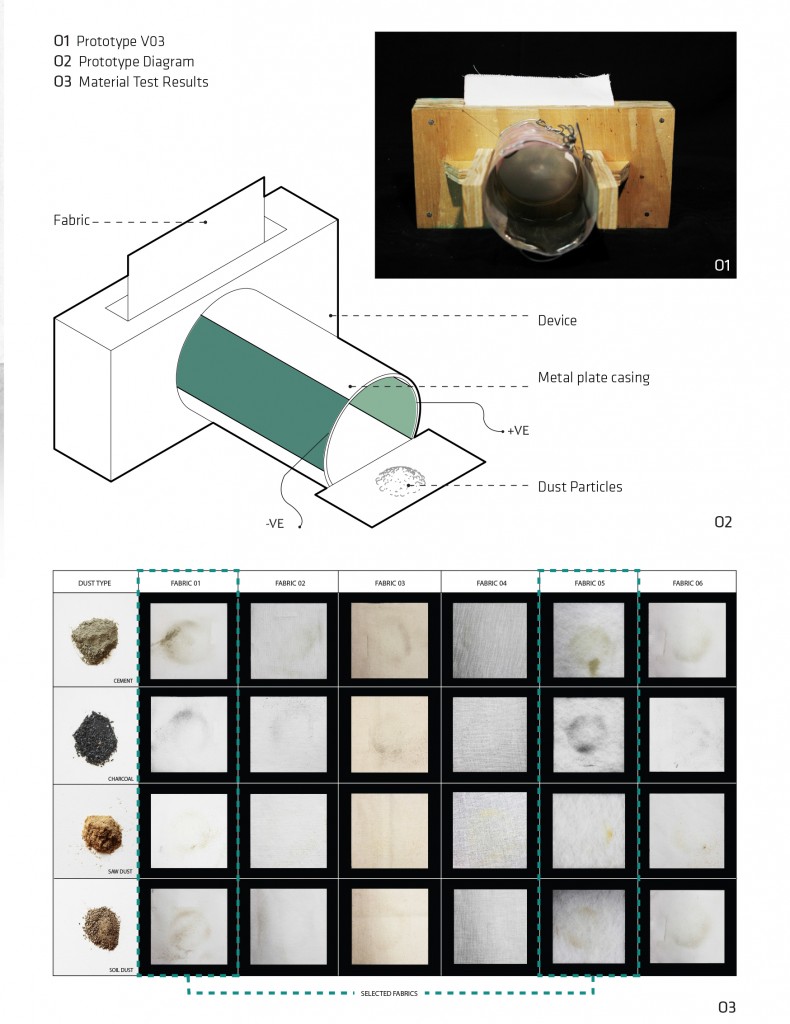
In accordance with the findings in stage 2, we experimented with other types of fabrics with inbuilt static charge. Six different types of these fabrics were tested for attraction properties with 4 types of dust particles. We created a device by placing 2 sheets of aluminum foil against each other. When charged with batteries, these foils created an electrostatic field in the area surrounded by the foils. The dust particles were then blown through this field which ionized them. The fabrics were placed at the end of the device in the direction of wind flow one at a time. The attraction properties of the charged dust to the different fabrics were noted and compared.
Findings: Fabric type 01 and 05 showed better results for the attraction of dust particles. However, to be used in the device another mechanism had to be formulated to clean or refill these due to the lack of collection capacity and self-cleaning properties of the fabric.
STAGE 04
Agents: Wind, pollution, movement (public & vehicular)
Vision: Stationary device placed at different locations to capture pollution
Prototype components: 2 aluminum meshes placed inside a chamber, 9V battery,
Step-up high voltage generator
Technique: Attraction of pollution particles using the electrostatic field.
Technology: Ionization of pollution particles for attraction
Aim: Attract pollutant particles and process it to be used as 3d printing and ink materials.
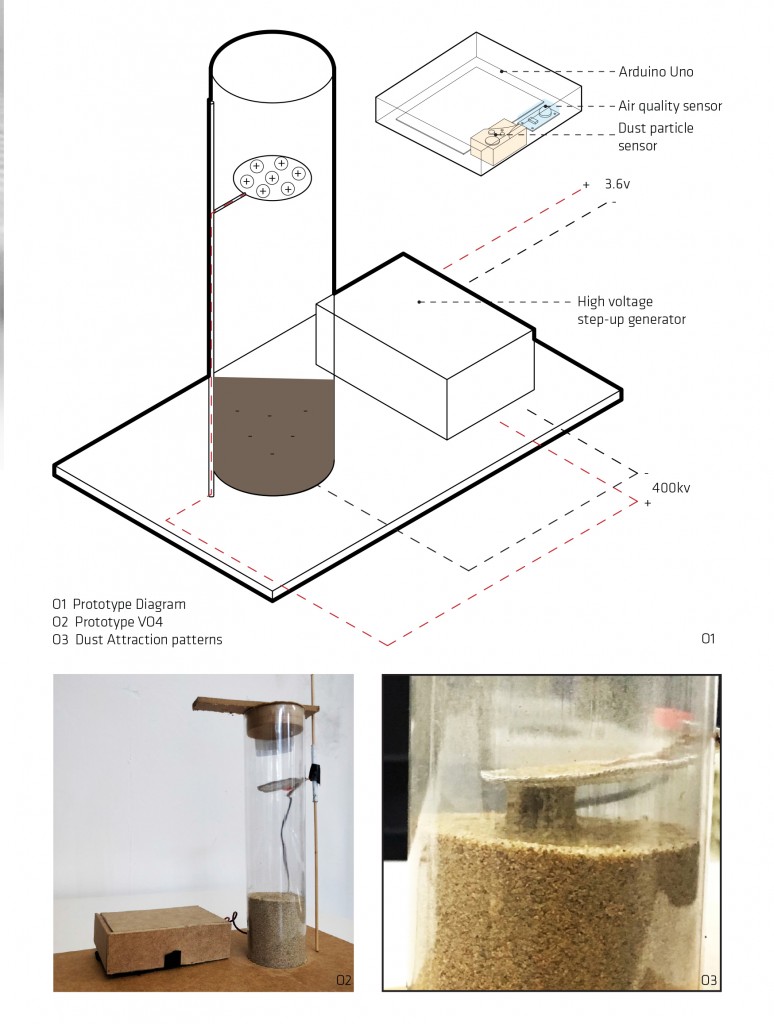
As per the other finding in stage 02, the same experiment was conducted with high voltage input. For this high voltage step-up generator was used with the 9V battery. In this stage, a dense aluminum mesh was used instead of fabric copper mesh. The prototype included a cylindrical chamber with the negatively charged ionizing mesh fixed at the bottom of the chamber. The negatively charged attractor mesh was attached along the vertical axis with a movable handle that allowed changing its distance from the positive mesh. The chamber was then filled with the dust particles directly in contact with the negative mesh. The device was tested with 4 types of dust particles used in stage 03. The attraction worked best with this device and settings and different materials formed different interesting patterns when attracted to the positive mesh.
Findings: The voltage generator gave us the desired result with an aluminum mesh. However, in the real device washing down and directing these pollutants to the soil without proper filtration would lead to soil pollution. Therefore, another approach was needed to reuse these accumulated particles in a non-hazardous manner.
STAGE 05 – THE FINAL PROTOTYPE
Agents: Solar energy, pollution
Vision: Pollution capturing device that roams around the city along a network of rails and also acting as an exhibit
Prototype components: Device, pollution chamber, discharge chamber, rail track, exhibition display
Technique: Attraction of pollution particles using the electrostatic field.
Technology: Ionization of pollution particles for attraction
Aim: Attract pollutant particles and process it to be used as 3d printing and ink materials.
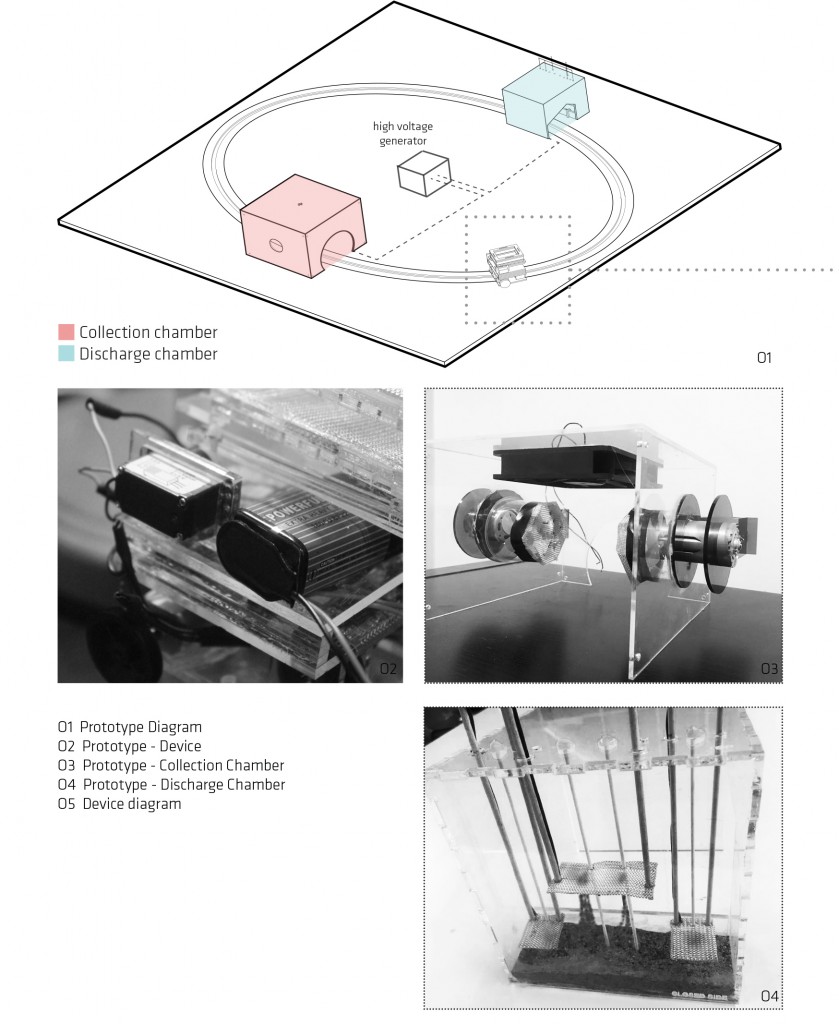
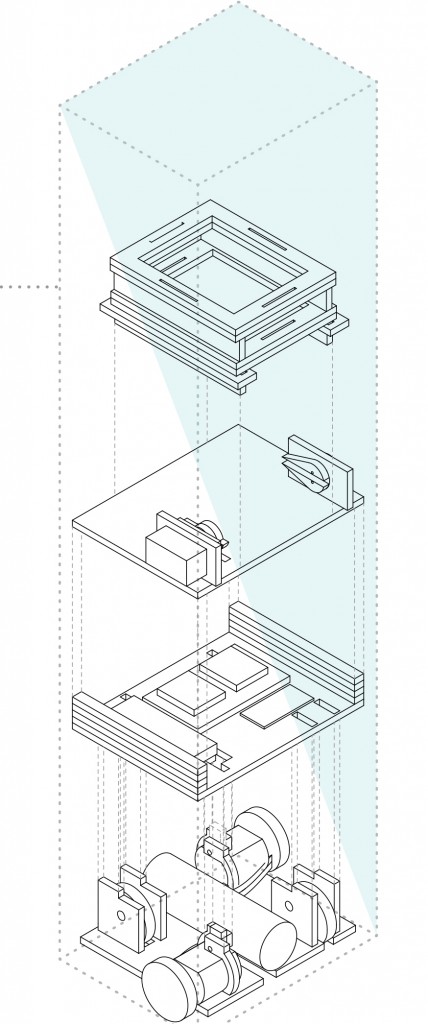
The basic components and principle of the prototype were achieved in stage 04. Till stage 04 the prototype was imagined as a stationary element that would be strategically placed at different locations in the Superilla. However, since pollution isn’t stationary and its conditions in the atmosphere change depending on time and activities, the device was proposed as an element that roams around Superilla, as per the data received by the air quality sensors, collecting the pollution particles. This can be done by connecting the device to a network of rails in the site with different discharge stations. And instead of washing down the pollutants to the soil by rain, the pollutants would be flushed into the chambers which would then be processed to be used as 3d printing materials and ink. The chambers itself would act like urban exhibition sculptures that would exhibit the collected pollution in an interactive manner and create awareness about the issue. To charge this device solar energy would be used instead of wind because of its high energy output. The prototype was designed to depict the basic principles of collection, discharge, and an exhibition in a simple loop of rail. Another chamber was created in this to replicate the polluted environment.
VISION
The future proposal for the project envisions development in the way these devices interact and move around the city. The device is inspired by a jellyfish with receptor tentacles. The design works on the same principle of electrostatic attraction between two meshes along with cyclone dust collector to collect the captured pollutants in a cartridge. These collected particles will then be discharged off at stations strategically located around the city. The discharge stations not only process these particles to be re-used as different materials but also act like an interactive exhibition sculpture to create awareness about the issue of pollution.
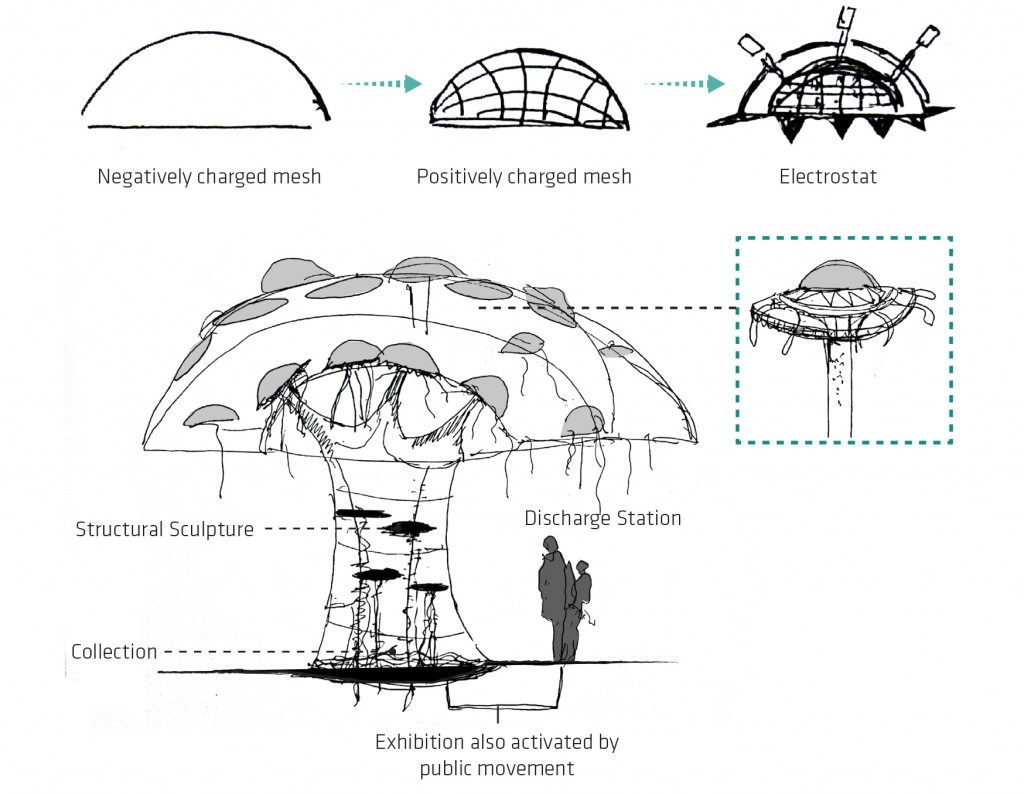

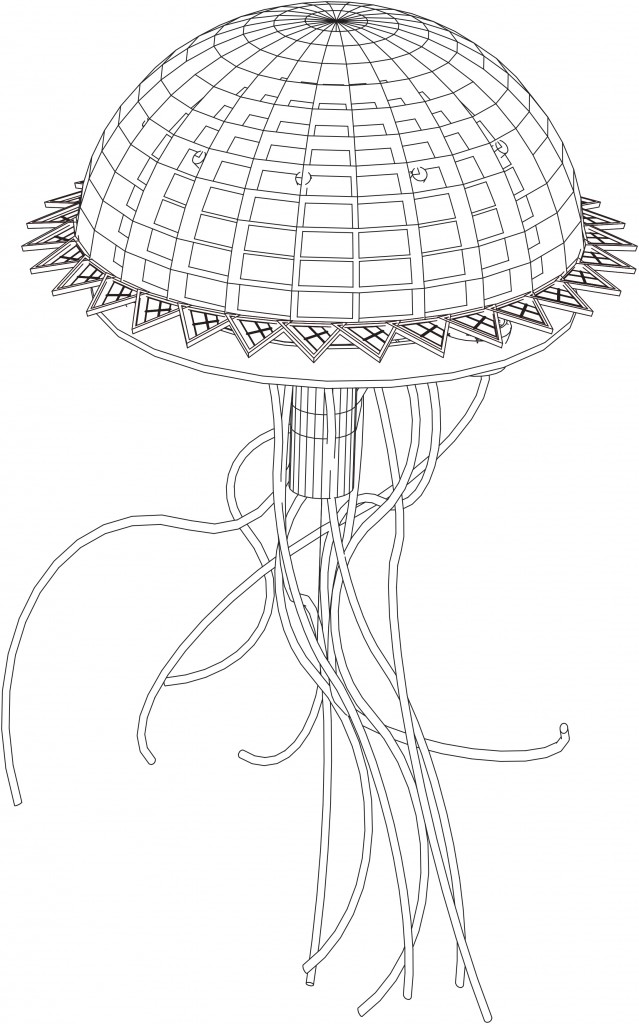




METABOLIC DESIGN
The device demonstrates the concept of urban ecology where the energy and resources function in a closed sustainable cycle. Solar energy is used to charge the device to create electrostatic fields in the mesh and attracts air pollution. These pollutant particles are discharged into the chamber which is then processed to be re-used as 3d printing and ink materials. The chambers would itself be used as an interactive urban exhibition to create awareness and engage people to work towards reducing pollution.
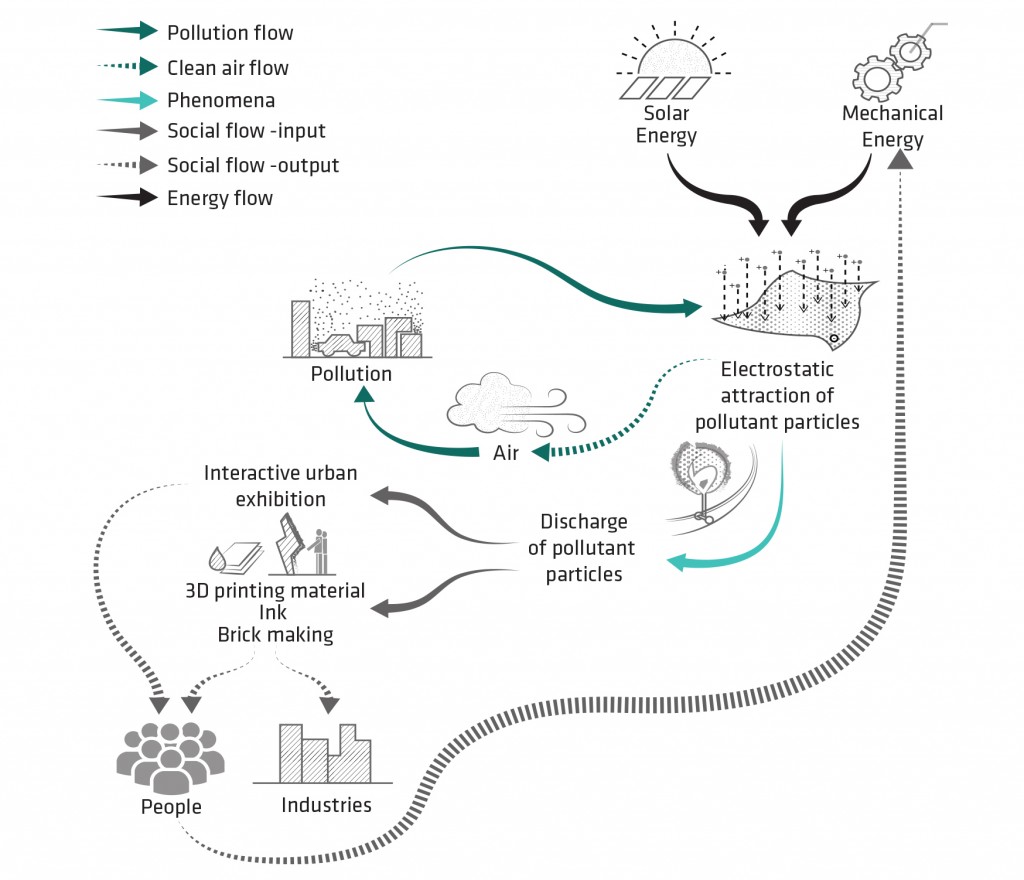
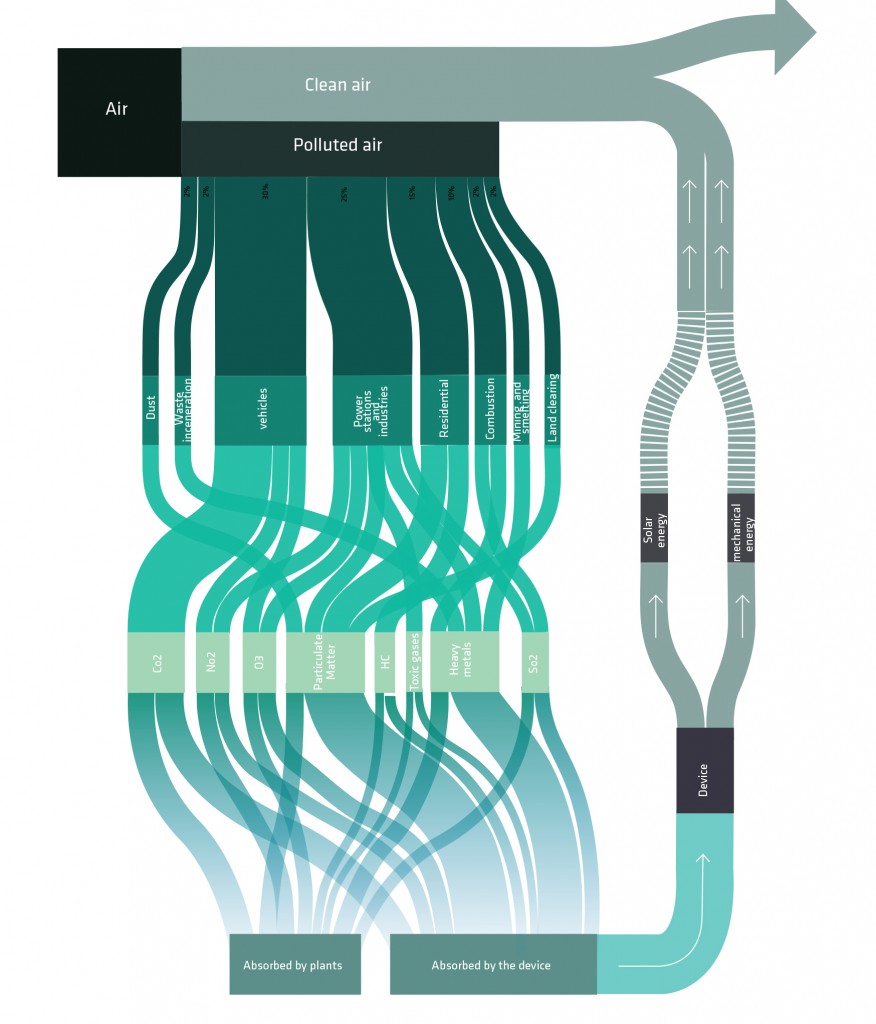
SITE
The device works as per the data received by air quality sensors placed at various parts of the Superilla. It travels around the Superilla along a network of rails giving access to different locations. Therefore, the design of the device is universal and depends on the pollution levels.
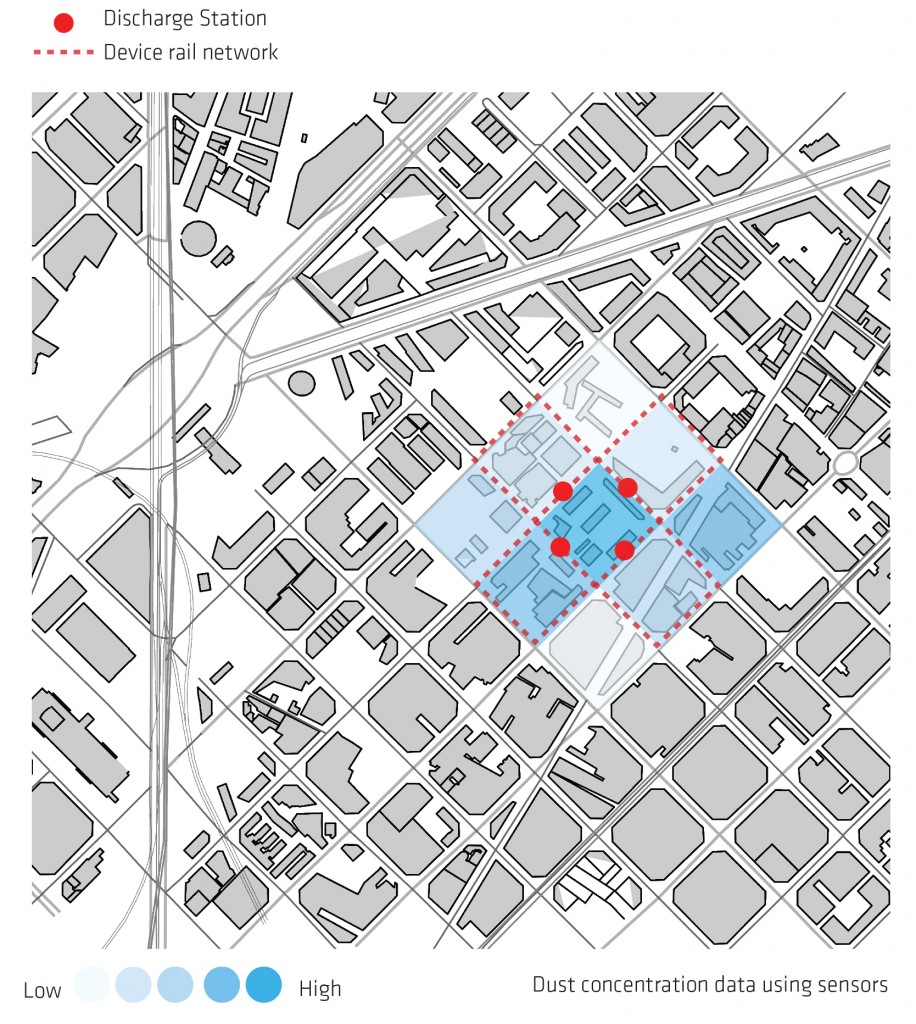
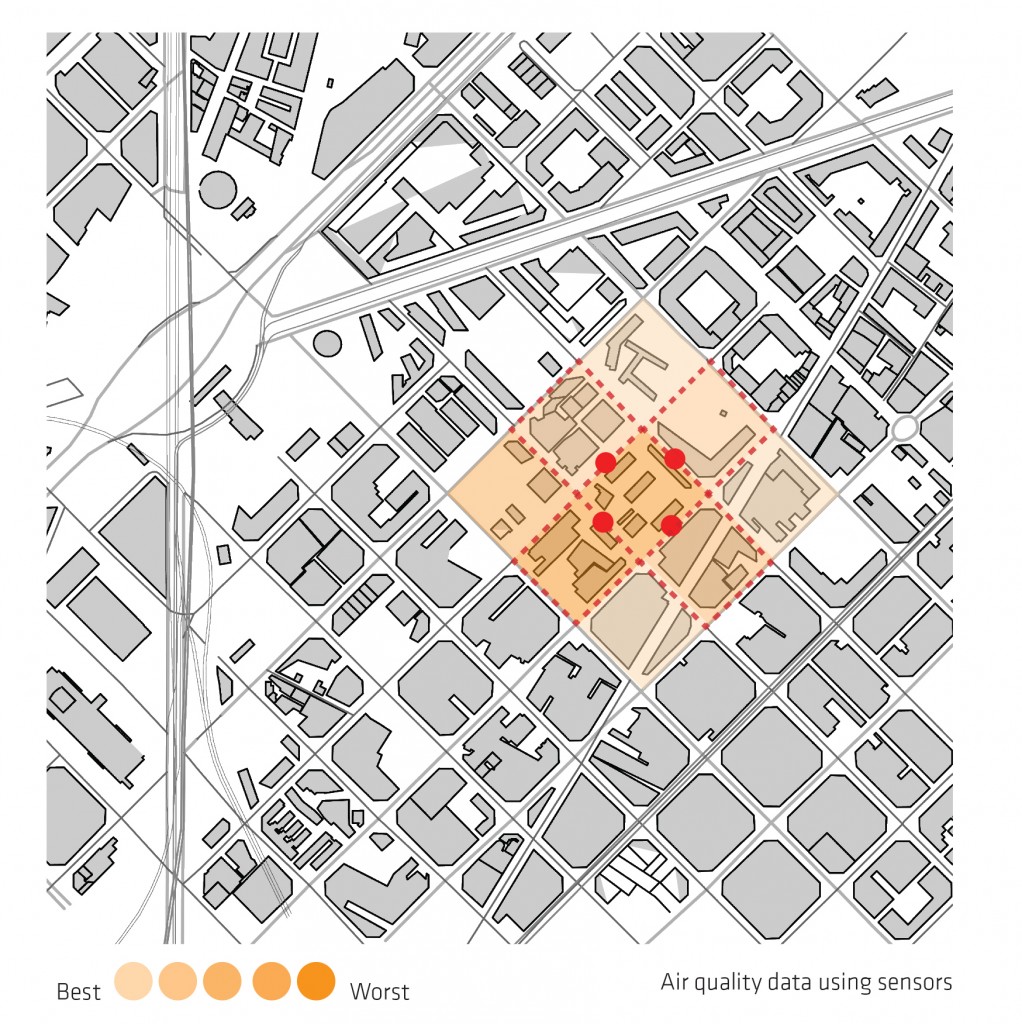
PHENOMENA & TECHNOLOGY
The major phenomenon in the process is the attraction of pollution particles and processing it to be used as 3d printing and ink materials. The whole system is intended to be made transparent and interactive to make it an exhibition element to create awareness about pollution problems. Three technologies are majorly used in the device which is as follows:-
- Harnessing solar energy from the sun using photovoltaic panels
- Attracting pollution by creating electrostatic field in the device
- Processing the collected pollution and re-using it for making paints, ink, 3D printing material and bricks.
CONCLUSION

MICRO-SCALE: In the micro-scale the attraction of various dust particles were tested in a device charged with the electrostatic field.
PROTO-SCALE: This basic idea was used to create the final prototype. With different chambers indicating different conditions, the prototype depicts the basic principle of the collection and discharge of various dust particles.
MACRO-SCALE: And our vision for the urban scale uses these principles to create a public spatial device that travels around the Superilla along a network of rails capturing pollution and discharging it at dedicated stations. These stations not only process these collected particles to be re-used in different ways but also interact with people to act like an exhibition element creating awareness about the issue of pollution. And as a futuristic proposal, we also envision the development of this project into drones that travels around various locations cleaning the city. This vision is not only limited to the bounds of Superilla or the city but can be developed further to extend to a universal scale where it can be used at any location depending on the pollution levels.
Depollute|loop is a project of IaaC, Institute for Advanced Architecture of Catalonia developed at MAA01 in 2017 by:
Students: Mohamed Ifthikar Noordeen , Kavya Jose and Arman Najari
Faculty: Javier Peña, Oriol Carrasco